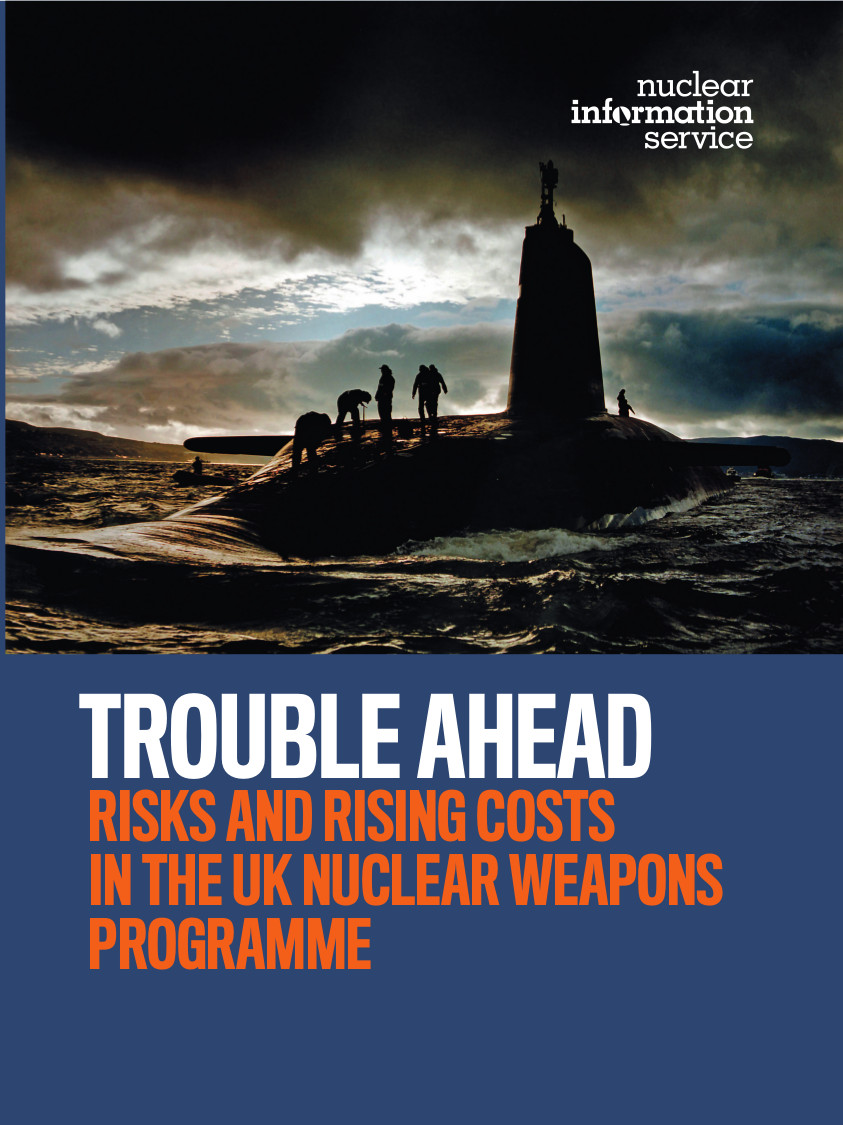This report looks at the problems arising in the UK nuclear weapons programme, the overall total cost of the programme and the need for policy changes to address a situation that is becoming increasingly unsustainable.
The nuclear weapons upgrade projects are entering a critical phase, with the building of the new Dreadnought submarines well under way. There is growing evidence that the upgrade projects are experiencing mounting problems, meaning it is unlikely that key aspects of the programme will be delivered on time and to budget.
The report also shows that problems with different elements of the UK’s existing nuclear weapons system could create knock-on effects, increasing overall costs and risks to the programme. These problems include: the need to extend the life of ageing Vanguard submarines; limited dock capacity in Devonport; and a failure to dismantle out-of-service submarines.
As well as the issue of cost there is serious potential for delays to impact on the ability of the submarine fleet to maintain the continuous deployment of one nuclear-armed submarine at sea at all times, known as Continuous At Sea Deterrence (CASD).
This report uses a new method for estimating the true cost of the UK’s nuclear weapons, including a wider range of elements than previous studies and extrapolating from the MOD’s own figures and historical spending to estimate average costs of each element over time. This method estimates the total cost of the UK’s nuclear weapons programme between 2019 and 2070 to be £172bn. This is almost certainly a low estimate, and is far higher than the government’s prediction of £31bn plus an additional £10bn contingency for building four new Dreadnought submarines.
The MOD’s overall spending projections for all of its military equipment procurement are based on optimistic assumptions about future savings. The MOD’s Modernising Defence Programme, which was supposed to address the large funding gap in its equipment plans, including the nuclear weapons programme, does not contain any concrete proposals for reducing spending.
As a consequence, the government is likely to soon face a ’trilemma’, consisting of a choice between increasing the overall MOD budget at the expense of other government priorities, reducing spending on conventional weapons to fund nuclear weapons or reducing spending on the nuclear weapons programme.
The report identifies two broad paths for making savings on the UK’s nuclear weapons programme. The first involves retaining a slightly reduced nuclear capability, which would yield relatively modest savings. The second would produce greater savings, but would involve at least a temporary period where nuclear weapons were not deployed at sea and are either kept in storage or scrapped altogether.
Rather than continue to pursue upgrade projects intended to maintain a posture that may be unachievable, it makes sense to re-examine the UK’s nuclear weapons policies and the assumptions underpinning them. This should include a reappraisal of the full costs and perceived benefits of possession of nuclear weapons and, given the UK’s international legal obligations to disarm and support the creation of a nuclear weapons free world, the case for nuclear disarmament.
To read the full report, download the PDF or request a hard copy by email to office@nuclearinfo.org
